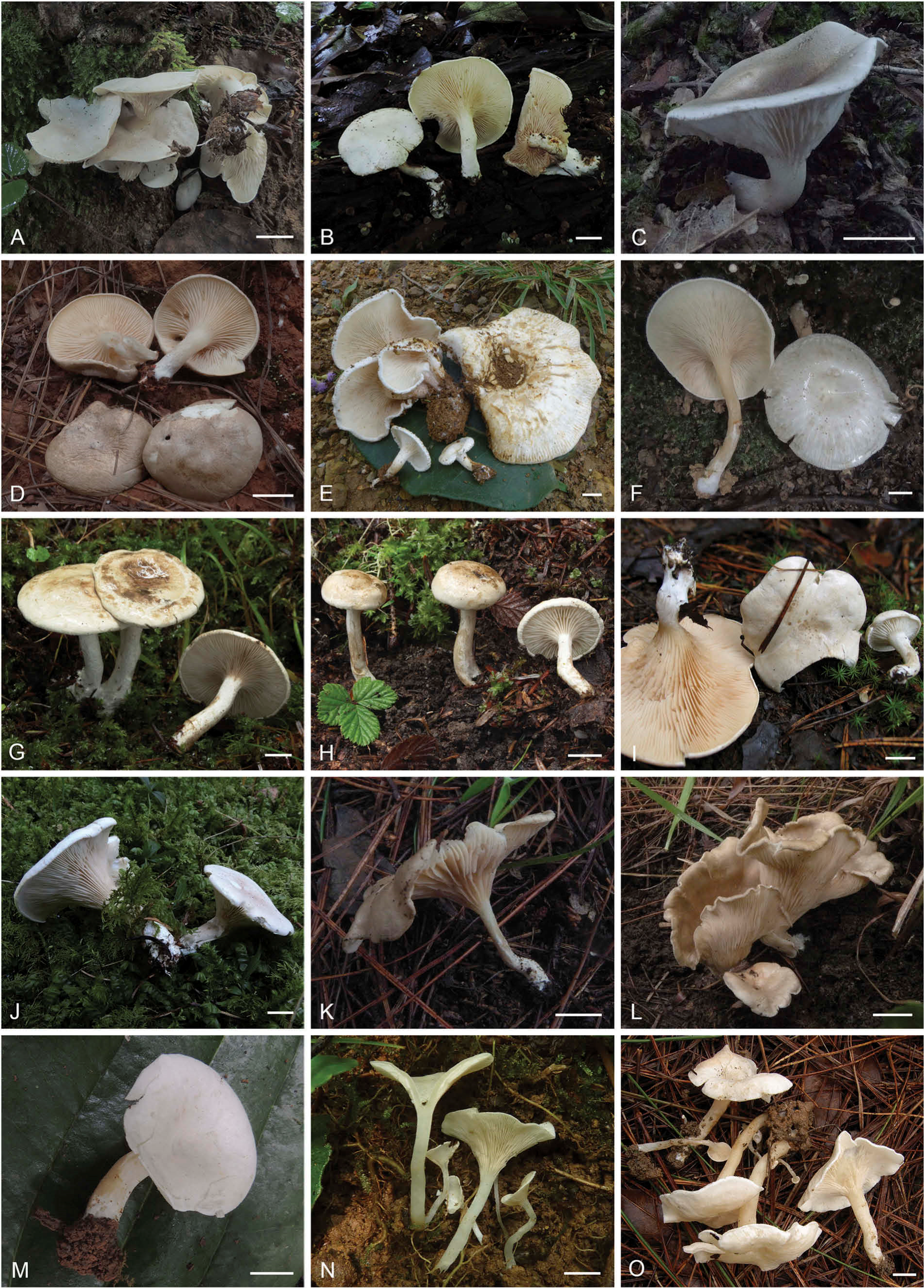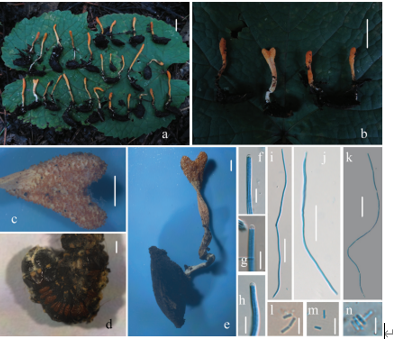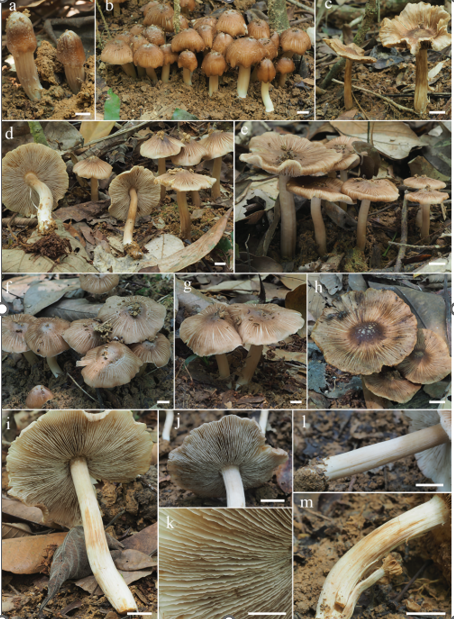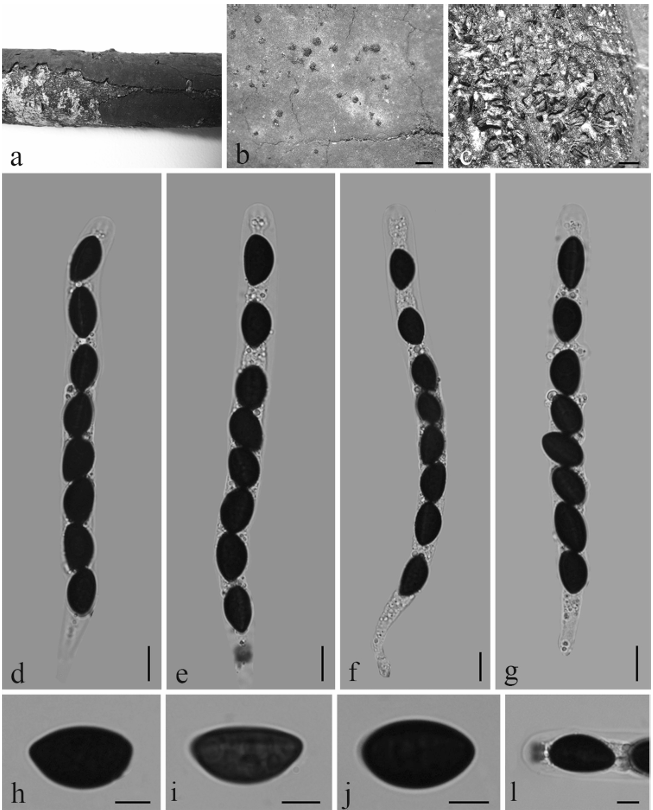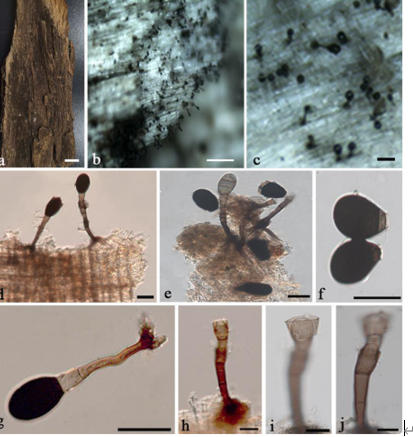Clitopilus rugosiceps S.P. Jian & Zhu L. Yang, sp. nov. 2020
MycoBank MB831309
Holotype: CHINA. YUNNAN PROVINCE: LushuiCounty, Laowo Village, Ronghua Hamlet, alt. 2100 m, scattered on soil under Pinus yunnanensis, 7 Aug 2011, J. Qin 246 (holotype KUN-HKAS73232).
Morphological description
Basidiospores 7.5–11(–13) × 5–7 μm, Lm × Wm = 8.73 (± 0.86) × 6.03 (± 0.47) μm, Q = (1.14–)1.17–1.93(–2.10) (Qavg = 1.46 ± 0.17) [68/3/3], hyaline, amygdaliform, limoniform, subfusiform, or sometimes subovoid in profile and face view, angled in polar view with 5–7 obvious longitudinal ridges. Basidia 20–36 × 7–12 μm, clavate, hyaline, 4-spored, rarely 2-spored; sterigmata 2–4 μm long. Lamellar trama more or less regular, composed of 4–8 μm wide, hyaline hyphae; oleiferous hyphae rare; subhymenium consisting of filamentous hyphal segments. Lamella edges fertile. Pleurocystidia and cheilocystidia absent. Pileipellis a cutis composed of more or less radially and compactly arranged, repent, incrusted or smooth, cylindrical hyphae, 3–7 μm wide, with yellowish to yellow intracellular or parietal pigment; subcutis made up of compactly arranged, hyaline, smooth, cylindrical hyphae, 3–7 μm wide; pileal trama composed of subregular, hyaline, filamentous or cylindrical hyphae, 4–10 μm wide. Stipitipellis a cutis composed of compactly arranged, thin-walled, hyaline hyphae, 3–5 μm wide. Caulocystidia absent. Clamp connections absent.
Habitat: on soil under Pinus yunnanensis.
Distribution: southwest China.
GenBank Accession: ITS MN061305; 28S MN065695; rpb2 MN148132; tef1 MN166244; atp6 MN133748
Notes: In sect. Clitopilus, C. rugosiceps is also similar to C. fusiformis and C. lignyotus. However, C. fusiformis has fusiform and larger basidiospores and is only known from the subalpine over 3000 m in altitude (Wang et al. 2017). Clitopilus lignyotus has a graybrown pileus and differently shaped and larger basidiospores (Hongo 1954).
Reference: Si-Peng Jian, Tolgor Bau, Xue-Tai Zhu et al. (2020): Clitopilus,Clitocella, and Clitopilopsis in China
